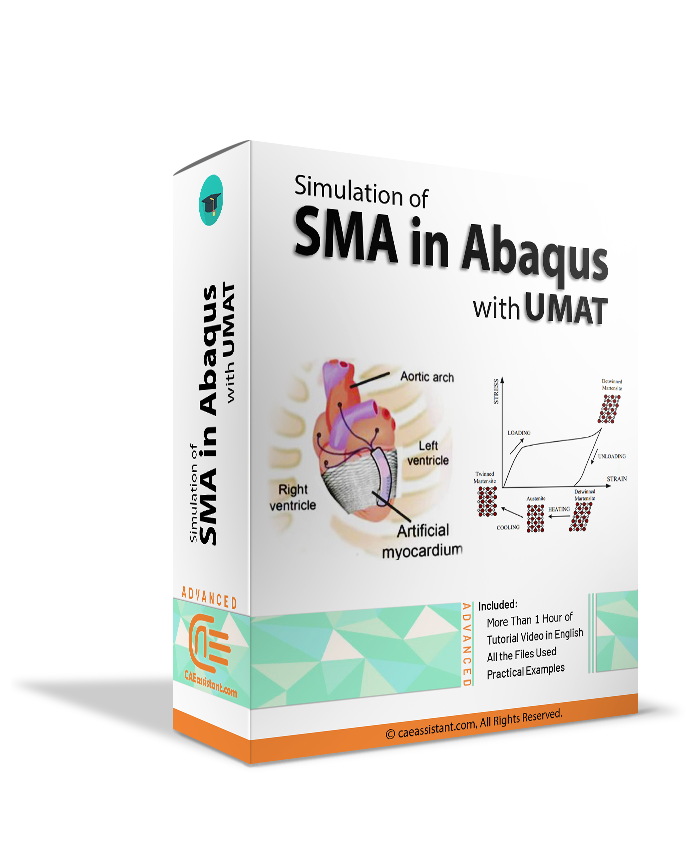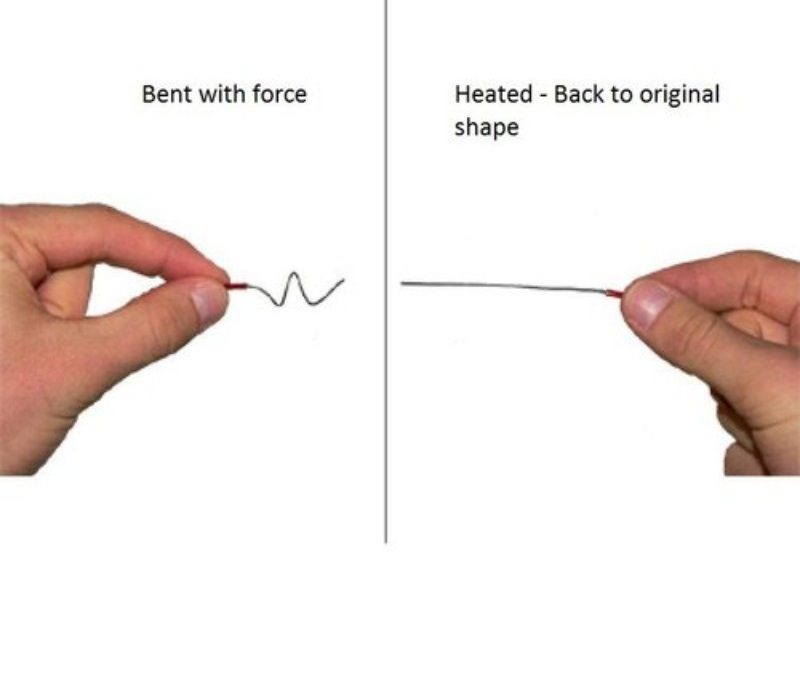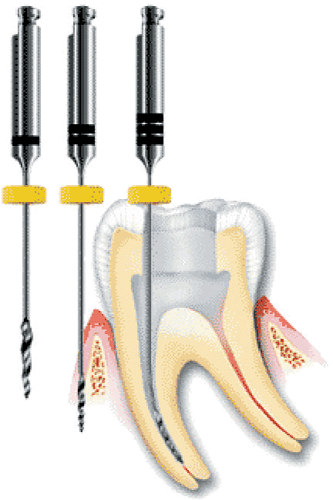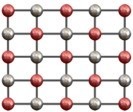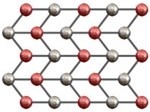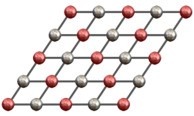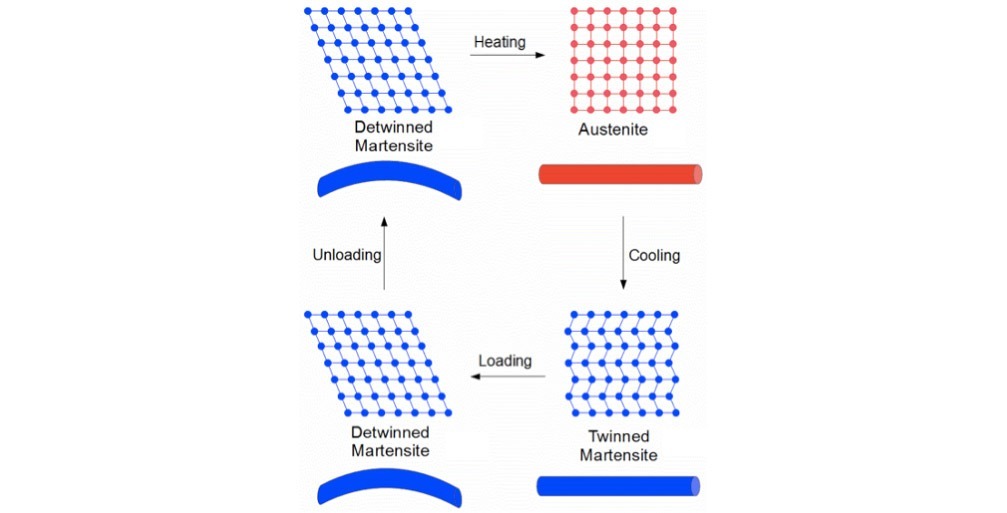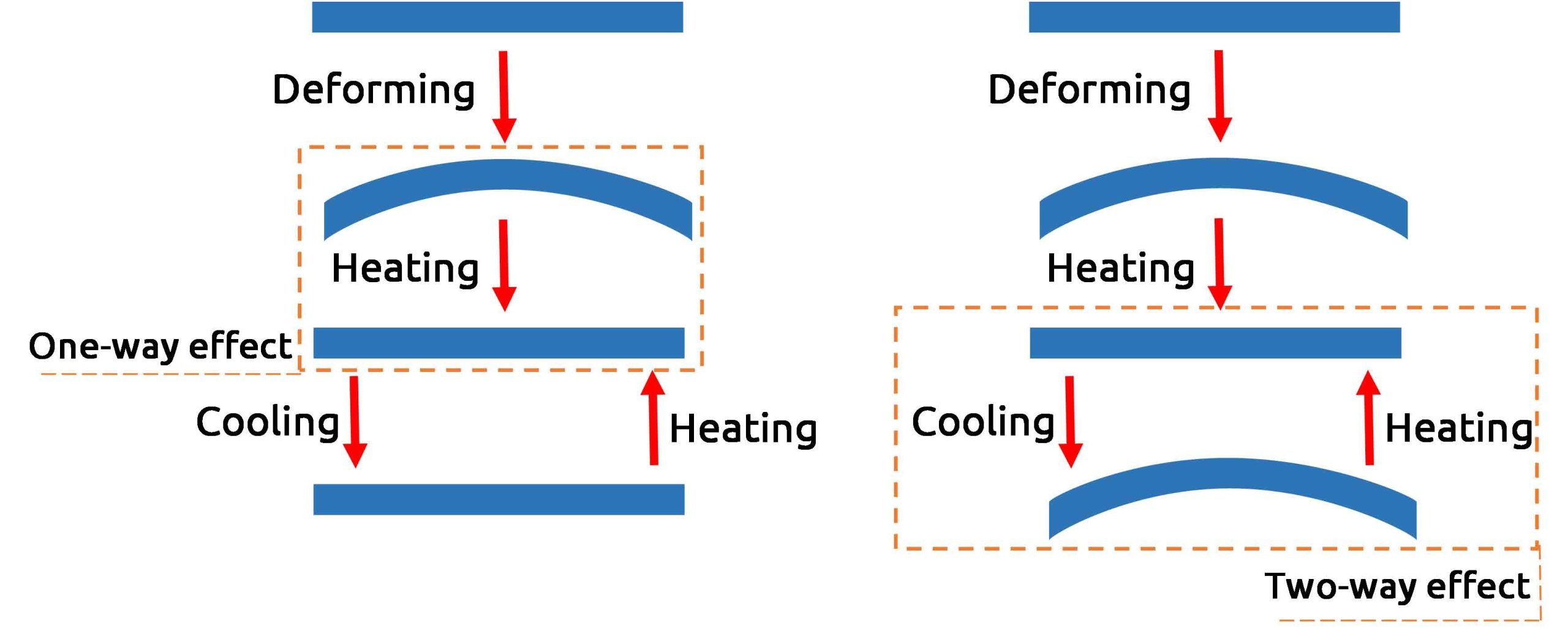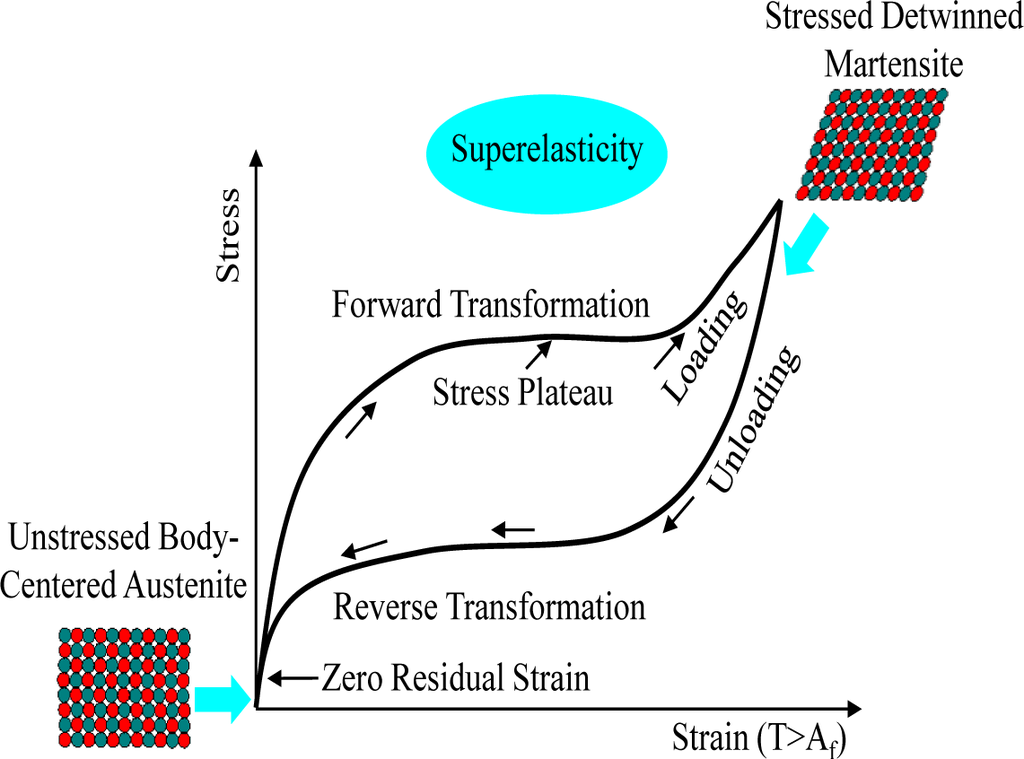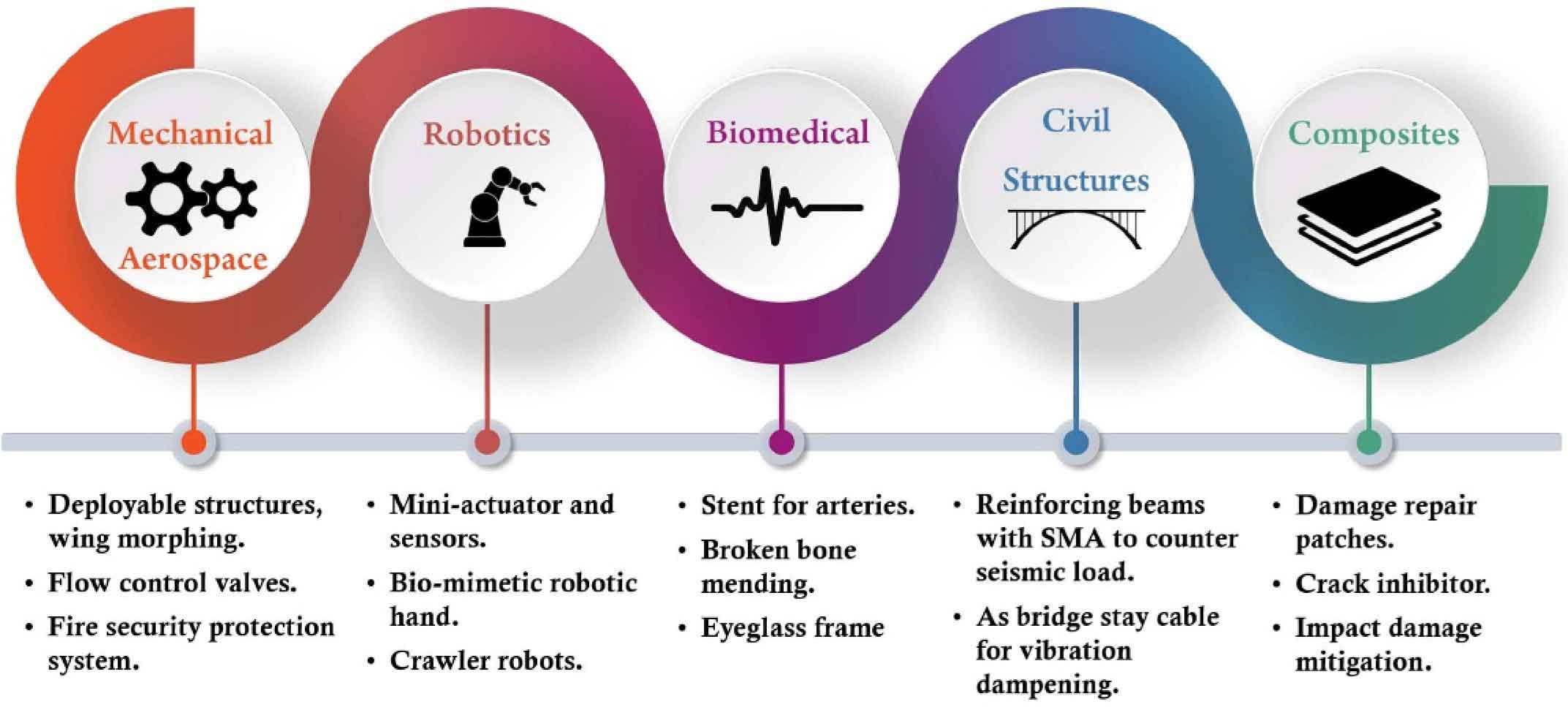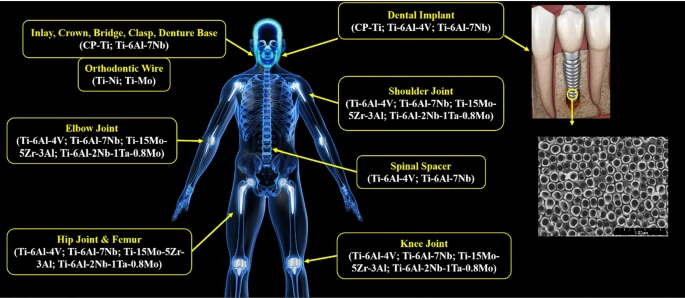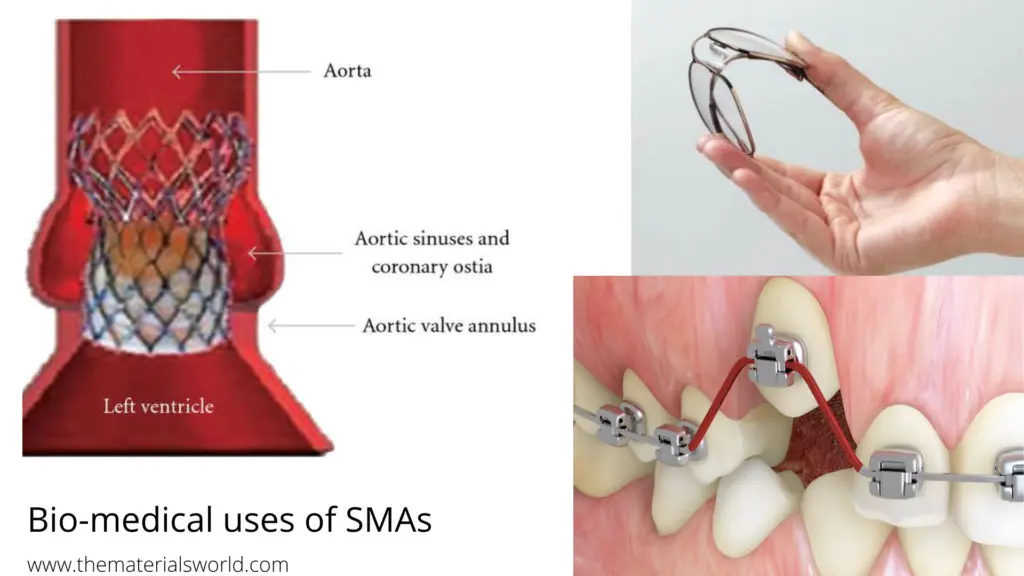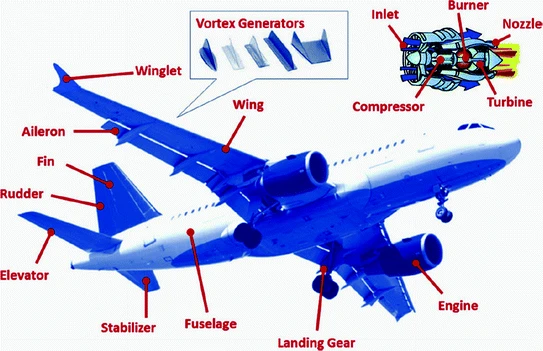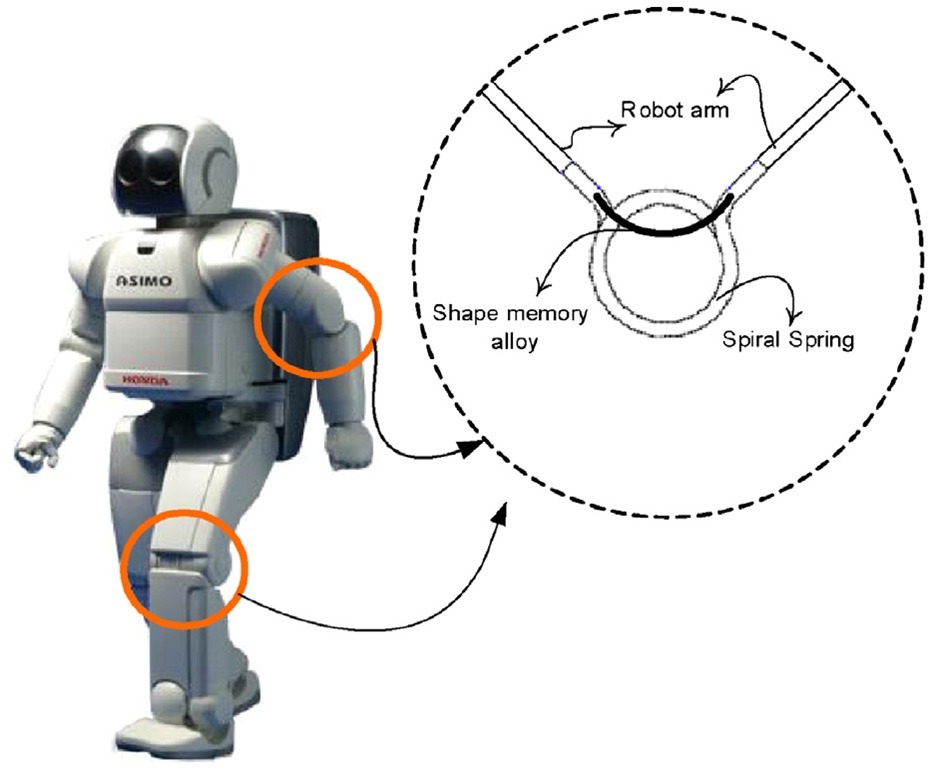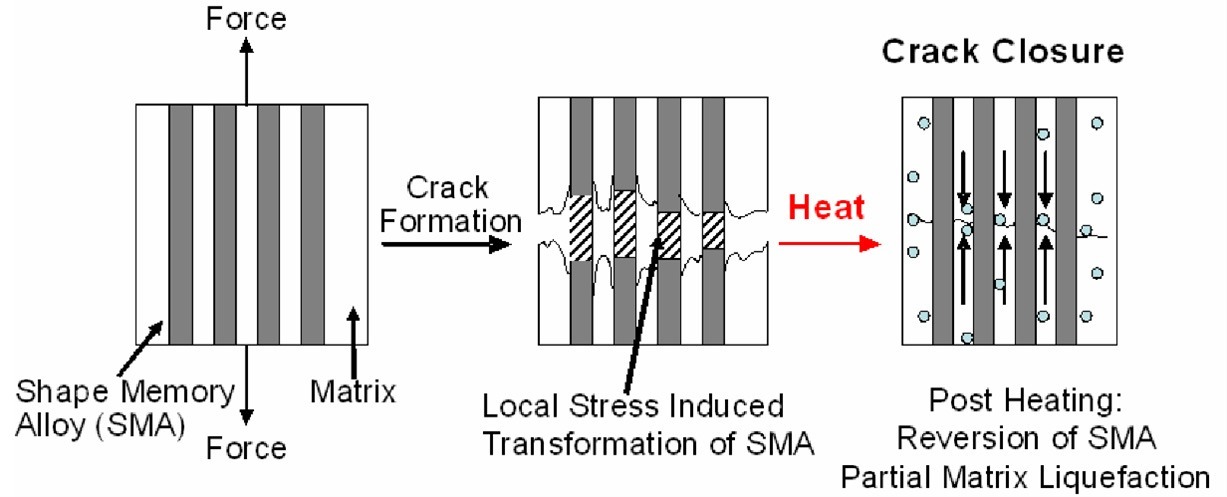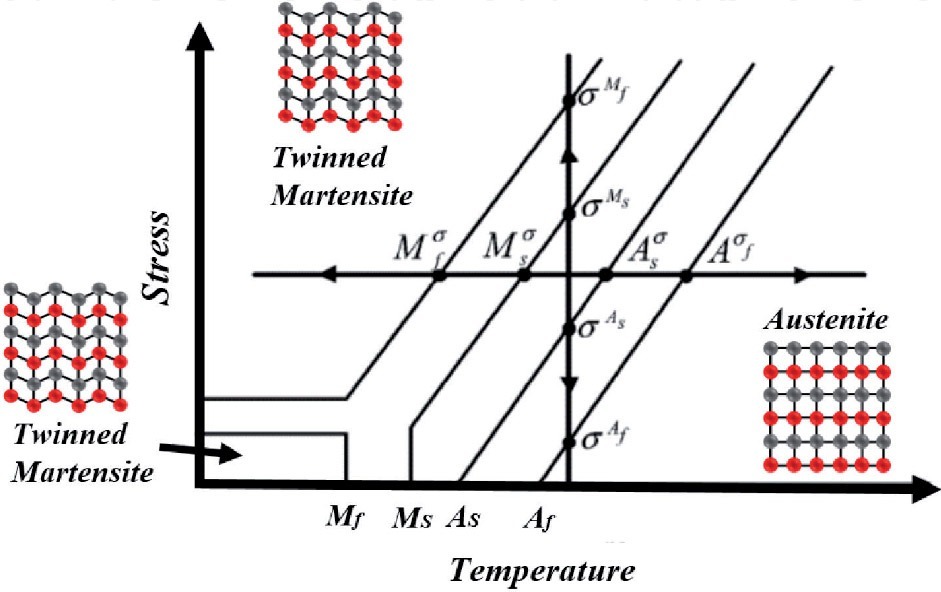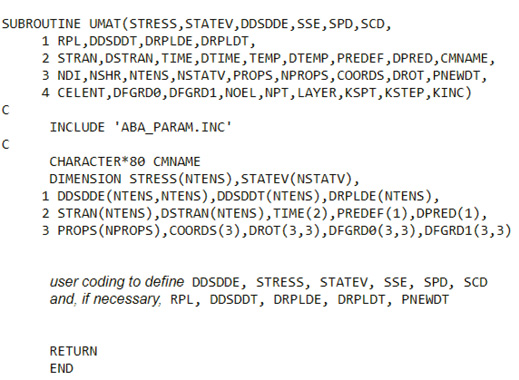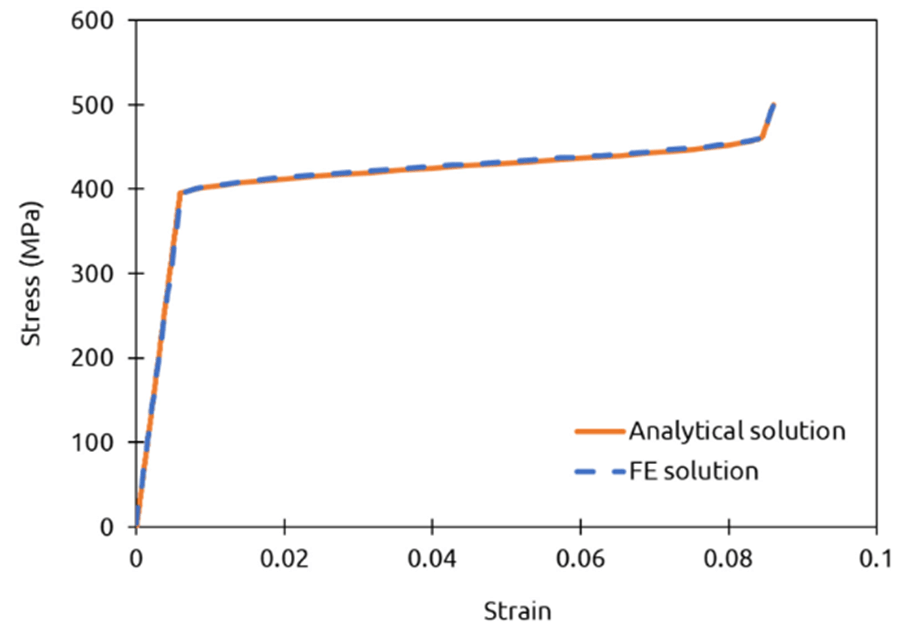Application of Shape Memory Alloys (SMAs) and SMA Simulation

Did you know that some materials can remember their original shape? This behavior is not magic. It is the unique property of Shape Memory Alloys (SMAs).
Thanks to their shape memory capability, SMAs have found diverse applications in various fields, ranging from aerospace to medicine. With this remarkable adaptability, the 14.1 billion USD SMA market in 2023 is projected to triple by 2033. To realize this projection, careful analysis and design of shape memory alloys are crucial. Abaqus UMAT subroutine is a powerful tool that enables the accurate simulation of the behavior of SMAs with varying characteristics.
In this post, we will first uncover the secrets behind the amazing behavior of shape memory alloys. Then, we will explore the diverse range of applications of shape memory alloys where SMAs showcase their remarkable adaptability. Subsequently, the models developed to simulate the behavior of shape memory alloys are explored. Finally, we will introduce the UMAT subroutine, an Abaqus tool for simulating the behavior of shape memory alloys (SMA Simulation).
1. An introduction to the world of Shape Memory Alloys
Shape memory alloys are a novel generation of materials with the ability to recover their original shape after experiencing considerable deformations. Due to this unique characteristic, they are finding rapidly growing applications in various fields.
You may wonder how shape memory alloys work. It is quite simple. Imagine a deformed-shaped memory alloy. When we unload and heat it, it recovers its original shape. You can see this behavior for a real shape memory alloy wire in Figure 1.
Shape memory alloys show the ability to return to their original shape due to two key features: the shape memory effect and superelasticity. Do you know what these terms refer to? We will say.
Figure 1: An SMA wire that cooled and bent, then recovered its original shape when heated [1]
1.1. What are the Shape Memory Alloys made of?
A common question that may arise in your mind is: what causes the remarkable abilities of shape memory alloys? The answer is that a unique combination of metals is at the core of shape memory alloys.
Nitinol is one of the widely used combinations of metals that can be employed in SMAs under this trade name. It is a combination of nickel and titanium with a lot of applications. For instance, Figure 2 represents the use of Nitinol in dental files. It is a common example of its daily applications worldwide, thanks to its excellent fatigue resistance.
Figure 2: The application of Nitinol in the dental files [2]
Nitinol was discovered accidentally by the United States Naval Ordnance Laboratory. During a laboratory management meeting, a sample was repeatedly deformed. An associate technical director decided to apply heat to the sample. To the amazement of everyone present, it returned to its original shape. This is one of the key points in the history of the development of shape memory alloys.
Besides nickel-titanium, the SMA family extends to other combinations with improved properties. Copper-aluminum-nickel and zinc-copper alloys are well-known examples that offer attractive advantages. Moreover, innovation in the field of SMAs in today’s world goes beyond metals. Researchers are exploring the incorporation of SMAs into polymers and composites. This will result in materials with enhanced flexibility, strength, and even self-repair capabilities.
There are still some questions remain, such as advantages of SMAs and types of SMAs which you can learn deeply in this tutorial.
| Explore our comprehensive Abaqus tutorial page, featuring free PDF guides and detailed videos for all skill levels. Discover both free and premium packages, along with essential information to master Abaqus efficiently. Start your journey with our Abaqus tutorial now! |
1.2. The Shape Memory Effect
The shape memory effect allows shape memory alloys to return to their original shape under the applied temperature. This behavior comes from the interactions between two different phases within the material: Martensite and Austenite.
Austenite is the parent phase, where the shape memory alloy remains stable at high temperatures. Figure 3 shows the crystal structure of an SMA in the Austenite phase.
Figure 3: Microscopic views of a shape memory alloy in the Austenite phase [3]
At lower temperatures, SMAs transition from Austenite to the Twinned Martensite phase. Certainly, this phase is characterized by a more disordered arrangement of atoms and often displays low-symmetry structures. Figure 4 depicts the crystal structure of an SMA in the Twinned Martensite phase.
Figure 4: Microscopic views of a shape memory alloy in the Twinned Martensite phase [4]
When the SMA is in the Twinned Martensite phase and experiences deformation, it transitions to the Detwinned Martensite phase. Figure 5 represents the crystal structure of an SMA in the Detwinned Martensite phase.
Figure 5: Microscopic views of a shape memory alloy in the Detwinned Martensite phase [5]
Now, consider an SMA in the Detwinned Martensite phase. Upon unloading and exposure to elevated temperatures, the atoms reorganize themselves into the Austenite phase. Consequently, the material reverts to its initial shape. This feature is referred to as the shape memory effect. Figure 6 presents a complete cycle of phase transformation in a shape memory alloy.
Figure 6: Schematic representation of the possible phase transformations in shape memory alloys [6]
Now you have a basic understanding of what the shape memory effect is and how it takes effect in shape memory alloys. But do you know that the shape memory effect may occur in two ways? Let us discuss it. Of course you can have the Video version of the following explanation in more detail and examples in this tutorial: “How do SMAs behave?“
1.2.1. One-Way and Tow-Way Shape Memory Effects
Shape memory alloys often exhibit the memory effect as we’ve discussed, known as the one-way shape memory effect. However, there is another group of SMAs that, in addition to the one-way effect, can revert to their deformed shape. This phenomenon is referred to as the two-way shape memory effect. The one-way and two-way shape memory effects are compared in Figure 7.
Figure 7: Comparison of the one-way and two-way shape memory effects in SMAs
The one-way effect is very simple, as shown on the left side of the figure. On its right side, we have a material that is deformed and then heated to recover its original shape. Upon cooling the material again, it returns to the deformed shape. Since it can recover both the original and deformed shapes, we call this characteristic a two-way shape memory effect.
The two-way shape memory effect is often achieved through a process called ‘training’. The training process involves subjecting SMAs to repetitive thermal cycles. In this process, the material learns how to behave under specific conditions. However, when we heat a trained object beyond a certain point, it may lose its two-way memory effect. So, one-way effect SMAs still tend to be more reliable and more commonly used. We will consider them for the remainder of this post.
1.3. The Superelasticity Effect
The SMAs are not limited solely to the shape memory effect for recovering their original shape. They also have the feature of superelasticity. Thanks to the superelasticity effect, SMAs can recover their original shape even when no temperature change has occurred.
To understand how superelasticity takes effect, let’s assume a material stabilized in the Austenite phase. As shown in Figure 8, we have deformed it with no temperature change. As a result, it directly transitions to an unstable phase of Detwinned Martensite. When we release the applied load, the SMA returns to its original shape without any residual deformations. This phenomenon is called superelasticity.
Figure 8: Representation of the superelasticity effect in shape memory alloys [8]
2. Application of Shape Memory Alloys in Different Fields
Imagine a material that returns to its original shape even after significant deformations. This is the fantastic reality of shape memory alloys. Far from being just a concept, this property is affecting various fields from medicine to aerospace and beyond. Figure 9 represents an overview of the application of shape memory alloys in different fields. We will discuss only some of them.
Figure 9: An overview of the application of shape memory alloys in different fields [9]
2.1. Medicine
Let’s start by exploring the applications of SMAs in medical systems. Shape memory alloys are making a significant improvement in the medical world. They provide adaptable and less annoying solutions in this field. For instance, we can use SMAs in the production of plates and pins to repair broken bones. Their ability to adapt to the bone’s shape, and then tighten as they cool, ensures a secure fit. This aids in the healing process. In Figure 10, you can see the potential uses of titanium-based alloys, including Ti-Ni, as implant parts in the human body.
Figure 10: The potential uses of titanium-based alloys as implant parts in the human body [10]
Nitinol stents are adaptable tools for opening blocked vessels, as shown on the left side of Figure 11. We can compress the stent for insertion. When warmed by body heat, it expands and perfectly conforms to the vessel’s shape. This process helps in restoring the blood flow.
Figure 11: Some applications of SMAs in medical and bio-medical fields [Ref]
Beyond the stents, we can use Nitinol wires to create dental braces. Such braces generate mild and continuous pressure on the teeth, adapting to tooth movement and reducing discomfort. A nickel-titanium dental brace is shown on the bottom right side of Figure 11.
Do you know what is memory eyewear? Or what are the benefits of memory metal frames? You can find your answer by viewing the top right side of Figure 11. It shows how SMAs can be used in the production of eyeglass frames to increase their lifespan. This is one of the applications of shape memory alloys in medical and bio-medical fields.
2.2. Aerospace
Shape memory alloys are integral materials in the aerospace industry. Aircraft wings equipped with shape memory alloy actuators can alter their shape during flight. This results in optimized performance for various conditions such as takeoff, steady flight, and landing. Additionally, shape memory alloy actuators are essential components used to reduce vibrations in airplane wings, prevent ice formation, and ensure a safe flight. Figure 12 provides a detailed overview of airplane parts where SMAs are commonly employed today.
Figure 12: An overview of airplane parts where SMAs are commonly employed [12]
In addition to airplane parts, we can utilize SMAs to generate sensitive satellite components. Their compact and lightweight characteristics make them suitable for limited spaces, while their shape memory properties guarantee precise and accurate operations.
2.3. Engineering and Robotics
SMAs have extensive applications in the field of engineering and robotics. So, it is impossible to cover all of them in a single blog post. However, we have just reviewed some of them for you.
In the field of robotics, SMAs offer precise and flexible movements. Devices made with SMAs can adjust to hold objects of different sizes. Additionally, robots equipped with SMA muscles can simulate human body parts more naturally. Figure 13 illustrates the application of SMAs in a robot to enhance its flexibility.
Figure 13: The application of SMAs in a robot to enhance its flexibility [13]
The applications of SMAs in engineering go beyond robots. Today, SMAs have found applications in earthquake-resistant buildings. SMA-reinforced structures can deform during earthquakes and then return to their original shape with minimal damage. Moreover, SMAs are used as self-repairing materials to increase the lifespan of structures. As you can see in Figure 14, they can detect damage and initiate self-healing mechanisms.
Figure 14: Schematic representation of crack-closure in a matrix reinforced with SMAs [14]
In addition to the discussed applications, shape memory textiles could be utilized in active wearables to create clothing that adapts to temperature or body movements. Such wearables have increased comfort and functionality.
2.4. Summary of Practical Applications
These were a few concepts in the world of SMA applications that we have discussed. Some have reached advanced stages of development, while others are still in the process of development. You can discover additional applications and different shape memory alloy products through a simple search. These findings could pave the way for using SMAs to simplify daily life.
3. Numerical simulation of behavior of the SMAs | SMA Simulation
Numerical simulations are cost-effective and accurate approaches to simulate the behavior of shape memory alloys. The SMA simulation mainly deals with defining the constitutive equations. Such equations relate stress to strain during possible phase transformations, as shown in Figure 15.
The main challenge in the SMA simulation is that the constitutive equations become nonlinear during phase transformations. Such equations depend on stress-induced and temperature-induced Martensite volume fractions. These two parameters determine the percentage of material transformed to the Martensite phase under decreasing temperature and applying stress, respectively. The nonlinearity of the constitutive equations presents a challenge and makes their solution difficult.
Figure 15: Representation of possible phase transformations in shape memory alloys on the stress-strain diagram [15]
3.1. The Developed Models | Shape Memory Alloy Wire
To address the challenge of analyzing the behavior of shape memory alloys, researchers have developed several numerical models. All of them aim to relate stress to strain in a balanced manner between simplicity and accuracy. However, each model has its limitations and advantages.
Brinson has developed one of the well-known models for simulating the behavior of shape memory alloy wires in a one-dimensional space. This model calculates the stress-induced and temperature-induced Martensite volume fractions during transformations. Subsequently, it uses Equation (1) to calculate the elastic modulus of the shape memory alloy.
In Equation (1), is the total Martensite volume fraction. It represents the total volume fraction of SMA that transformed into the Martensite phase.
is the modulus of elasticity for the SMA in the Martensite phase, and
represents its modulus of elasticity in the Austenite phase.
Finally, Brinson’s model introduces Equation (2) to evaluate stress in the shape memory alloys during the phase transformations.
In Equation (2), is strain, and
represents the maximum recoverable strain.
is the stress-induced Martensite volume fraction, and
is the thermal coefficient of expansion.
and
are the current and reference temperatures respectively.
You can find more models through a simple online search. However, representing them is beyond the scope of this post.
But you may still have some troubles to understand the equations above; Do not worry because you can find your answers in our tutorial for SMAs.
3.2. Using Abaqus for SMA Analysis
Abaqus CAE is a powerful tool for the SMA analysis. But how can we implement the nonlinear equations of SMAs in Abaqus, especially when they are not present in its library? This can be addressed by utilizing the UMAT subroutine.
3.2.1. The UMAT subroutine
UMAT allows users to define customized material constitutive equations in Abaqus. It goes beyond the default Abaqus library and enables the utilization of complex nonlinear or temperature-dependent material models in the simulations. Figure 16 represents the UMAT subroutine’s interface.
Figure 16: The UMAT subroutine’s interface
3.2.2. A Learning Package for Modeling SMAs in Abaqus
UMAT has made the simulation of the behavior of shape memory alloys in Abaqus possible. However, writing a UMAT subroutine is not a simple work. It requires a thorough understanding of material mechanics, finite element analysis (FEA), and programming in the Fortran language. But don’t worry, we have prepared a learning package for you “Simulation of SMA in Abaqus with UMAT“. It teaches you how to write the subroutine and use Abaqus to model the phase transformations in shape memory alloys.
In the provided package, you access a workshop where we modeled SMA wire phase transformations. In this workshop, we have compared the stress-strain curve with the analytical solution in a reference paper for verification. Figure 17 shows how well the obtained result in the workshop has been verified with the reference solution.
Figure 17: The stress-strain curve for a shape memory alloy simulated in [17] and compared with the analytical solution in [18].
The CAE Assistant is committed to addressing all your CAE needs, and your feedback greatly assists us in achieving this goal. If you have any questions or encounter complications, please feel free to share it with us through our social media accounts including WhatsApp.
If you need deep training, our Abaqus Course offerings have you covered. Visit our Abaqus course today to find the perfect course for your needs and take your Abaqus knowledge to the next level!

